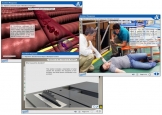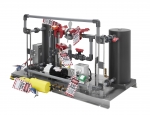V/R Workplace Safety Training Program
Every individual should be trained with hands-on skills for basic workplace safety. With our Workplace Safety package, you get four modules that allow learners to put safety training into practice in a safe, virtual environment. The training modules include AED, CPR, Fire Suppression, and Virus Vision.








